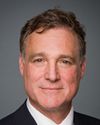Certainly. Thank you, Mr. Chair.
The first item is $8.2 million. It is actually a reprofiling from last year. It is going towards equipment in the new building that we are in the process of occupying. It is related to audiovisual and IT equipment that wasn't ready to be completed last year and was rolled forward to this year as part of our building. So that money was reprofiled from last year to this year.
With regard to the $1.6 million in new funding, CSE's primary mandate in cyber-defence has been to protect the networks of the Government of Canada, and that's been our focus for the last couple of years. As we've all seen over the past recent months, I think, the level of cyber-attacks that we are facing continues to increase. This amount of money here will allow us to put some of our expertise to work with critical infrastructure providers and the private sector, non-government folks, to begin to assist them in strengthening their telecommunication networks against cyber-attacks such as we've seen over the past few months.




